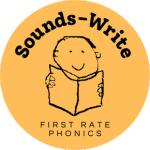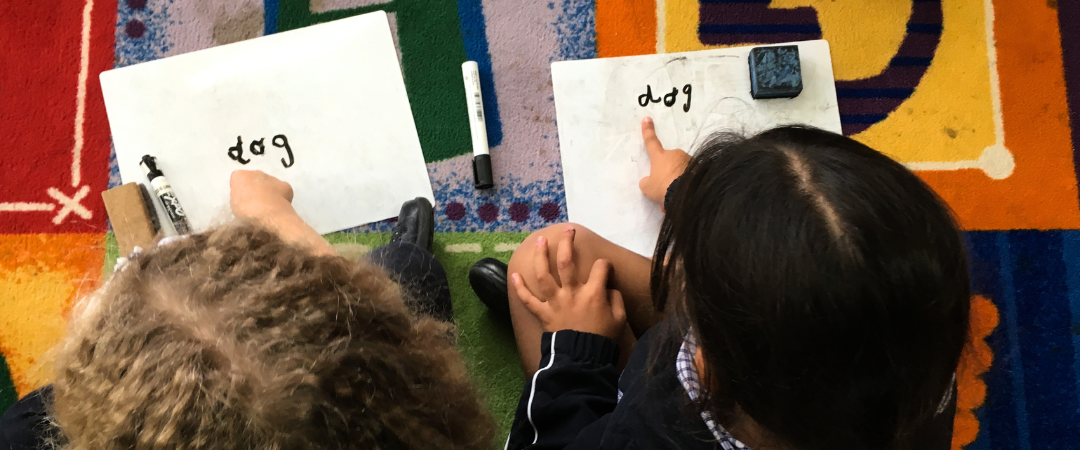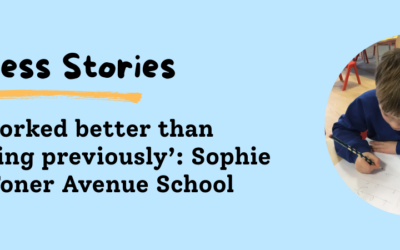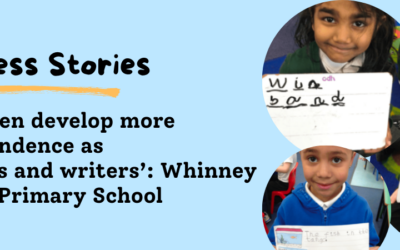We’re often asked how best to organise classroom space when teaching Sounds-Write.
In Reception, we recommend that children sit on the floor with their whiteboards and markers at the ready for their Sounds-Write session. Older students can sit on the floor or at their table, whatever works best for you in your setting. As you probably know, we are firm advocates of children using mini-whiteboards. They help integrate the teaching of reading and writing, which should both happen at the same time, as reading and writing are two sides of the same coin. Whiteboards also play a crucial role in providing the teacher with the opportunity to offer immediate feedback through formative assessment, and to monitor what all students are writing on their individual board by asking them to ‘chin it’.
For children who need more support and who are working with a Teaching Assistant, we strongly recommend that the TA works with them at a separate table, mirroring exactly what the teacher is doing with the rest of the class to help them keep up. This enables those children who need extra support to take part in all the activities, word building, reading and writing every word that their peers are working on with the class teacher. At the same time, these students have access to a dedicated, trained practitioner who is able to offer the right help and support precisely in the moment it’s needed through the use of our careful scaffolding techniques. And it is this supported, deliberate practice that is going to enable these students to keep up. Although it requires the teacher to share their planning with the TA at the start of the session and a little preparation in terms of getting the relevant sound tiles ready, we strongly believe this setup maximises the support the students get, so it’s really worth it.
We were lucky enough to visit the wonderful Chorley St James Primary School in Lancashire the other week, and that’s exactly how they set up their classrooms. Here’s their Y2 class working on different spellings of the sounds /ue/. Whilst the teacher is working with the whole class and leading the session, the TA is supporting two students do the same work in parallel, so they can both be part of the session and get additional support and practice to help them succeed.
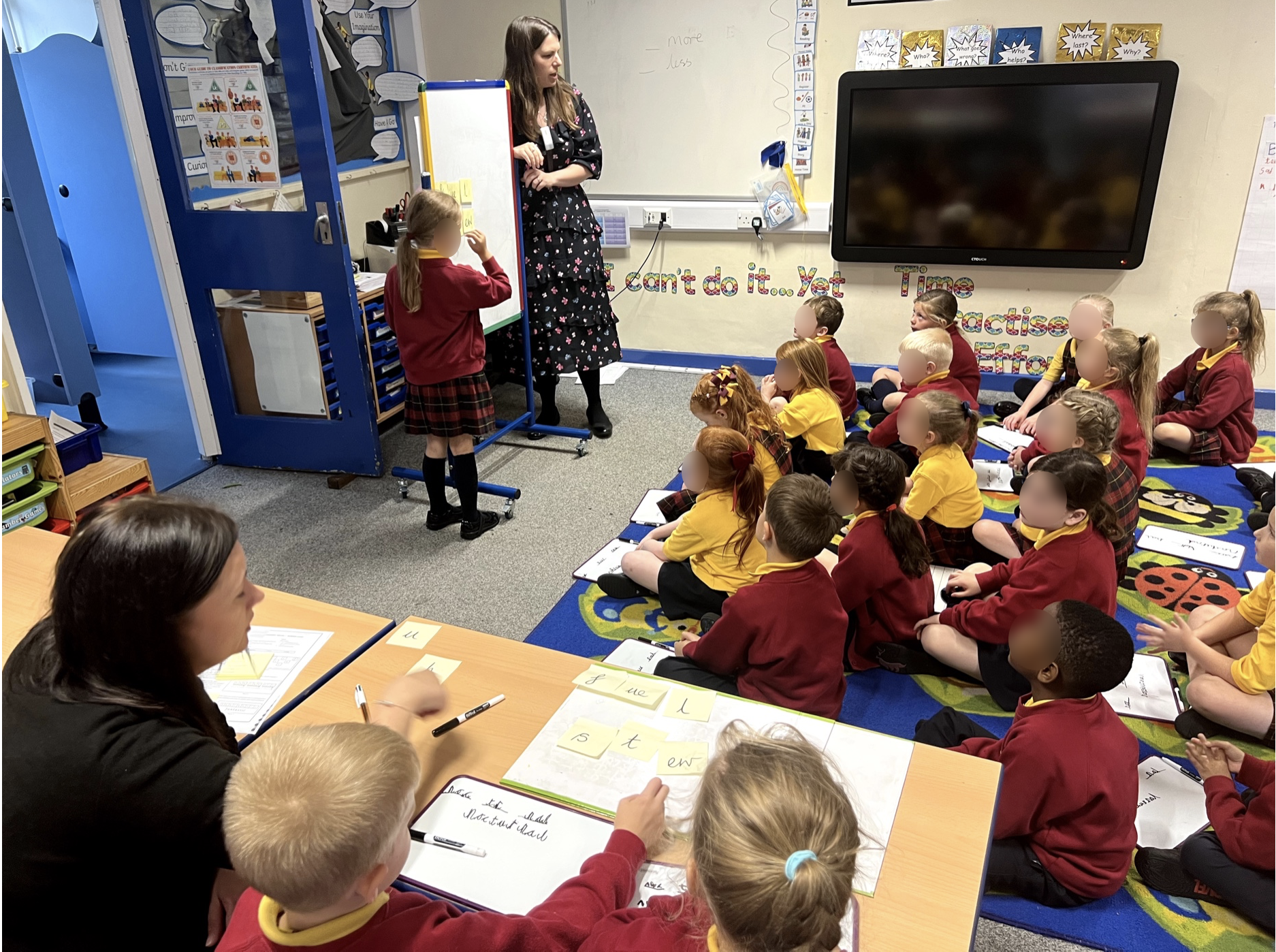
If you have a Sounds-Write-trained TA working with you in your classroom, why don’t you try to set up your classroom this way and give it a go for a few weeks, and let us know how you’re getting on?
You may also like
‘It´s worked better than anything previously’: Sophie Cox, Toner Avenue School
Toner Avenue School has achieved Silver School accreditation for their commitment to delivering high-quality phonics. Sophie Cox, Phonics Lead, tells us why they chose SoundsWrite and why it works so well for them.Why did you choose Sounds-Write and how did you find...
‘Children develop more independence as readers and writers’: Ruth Verrill, Whinney Banks Primary School
In 2019, Whinney Banks chose Sounds-Write as its phonics programme. Ruth Verrill, Early Reading and Phonics Lead, tells us how this led to a transformative journey for the school.Many of our pupils start school with low levels of speech and language, so an approach...
Building Reading Fluency: Practical Strategies for Educators
Fluency is often described as the bridge between learning to decode and reading with true comprehension. But what does fluency really involve and how can teachers best support it in the classroom? In our recent Sounds-Write webinar, Reaching Fluency, Practical...
